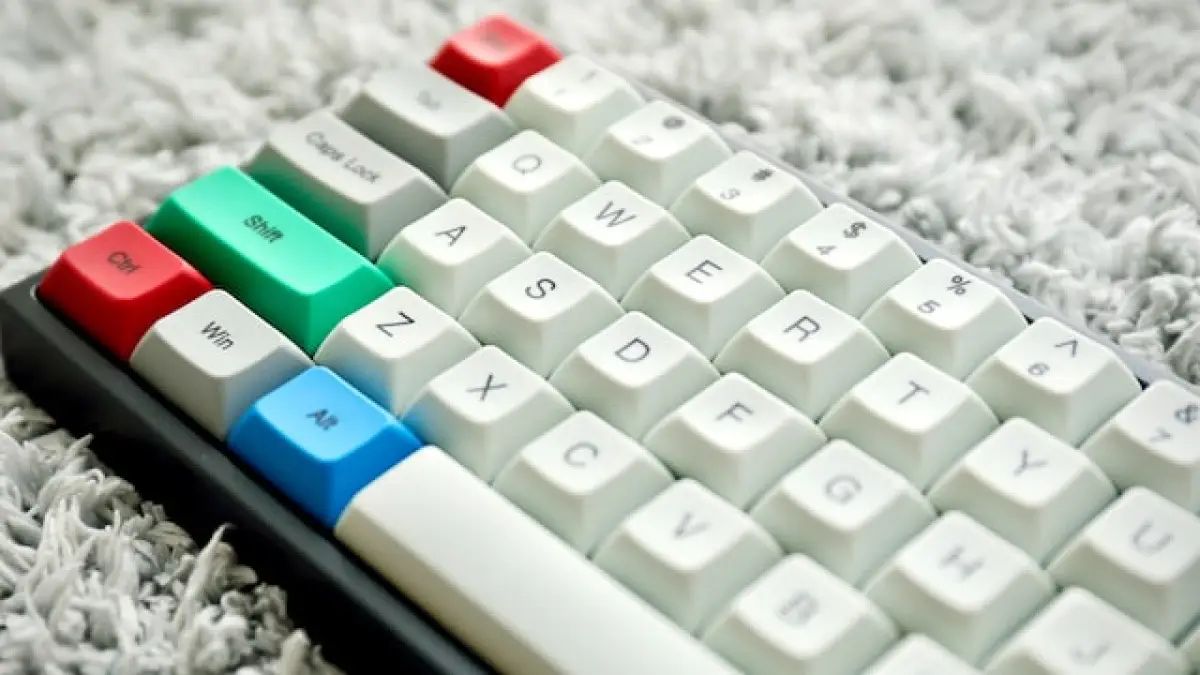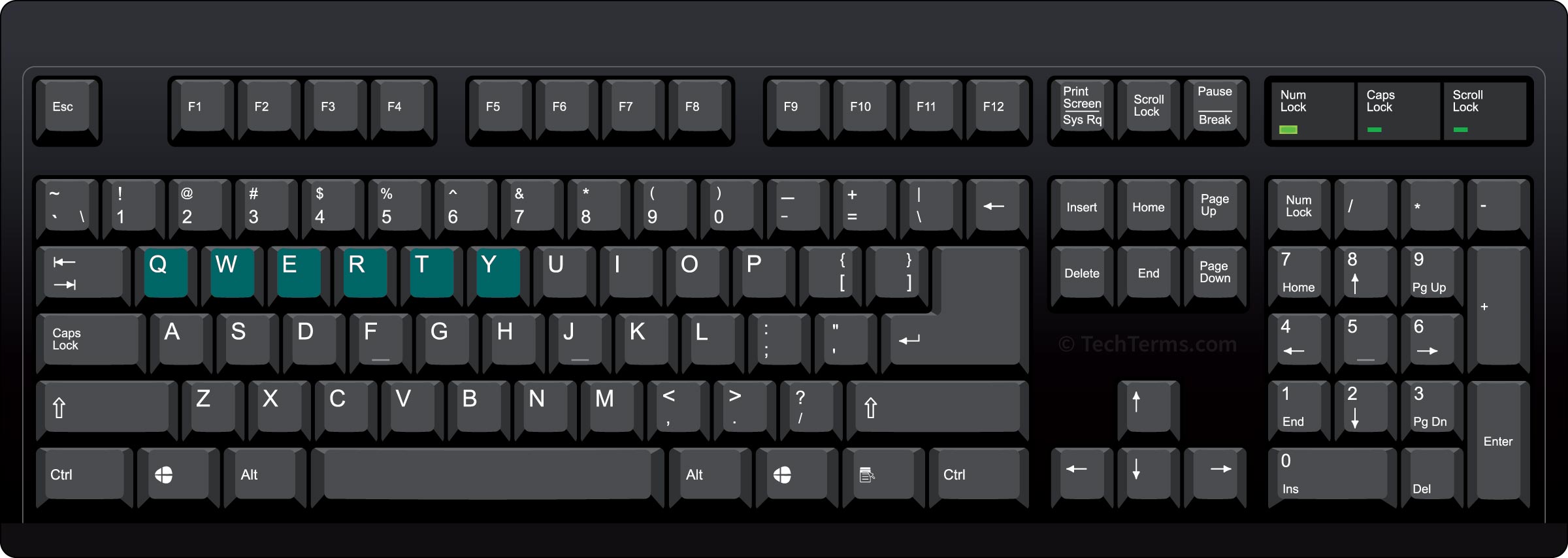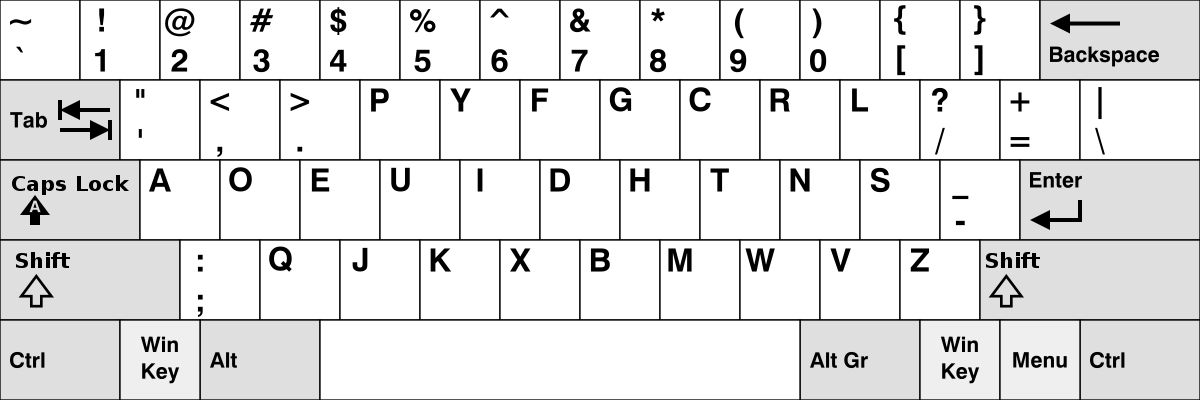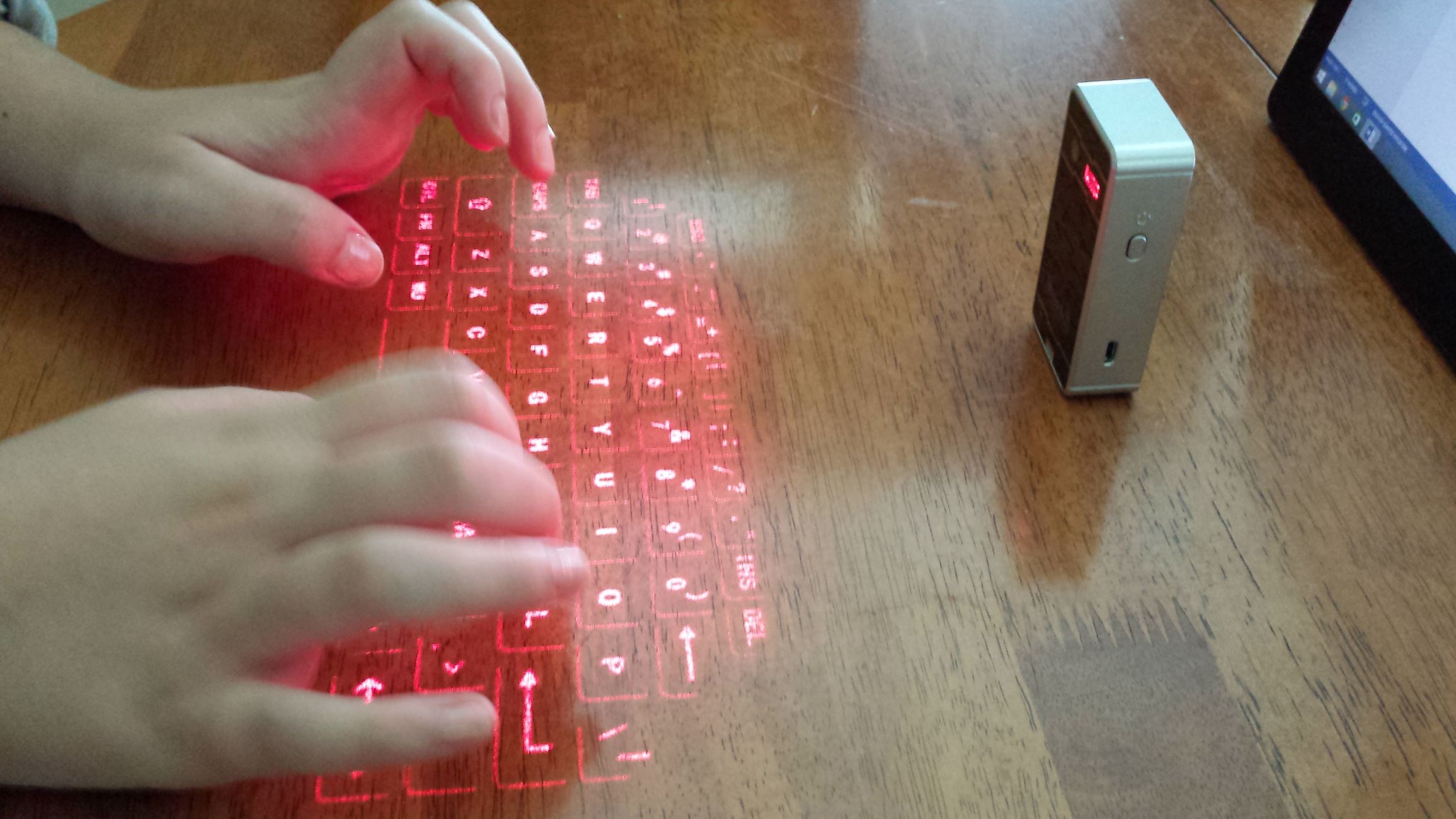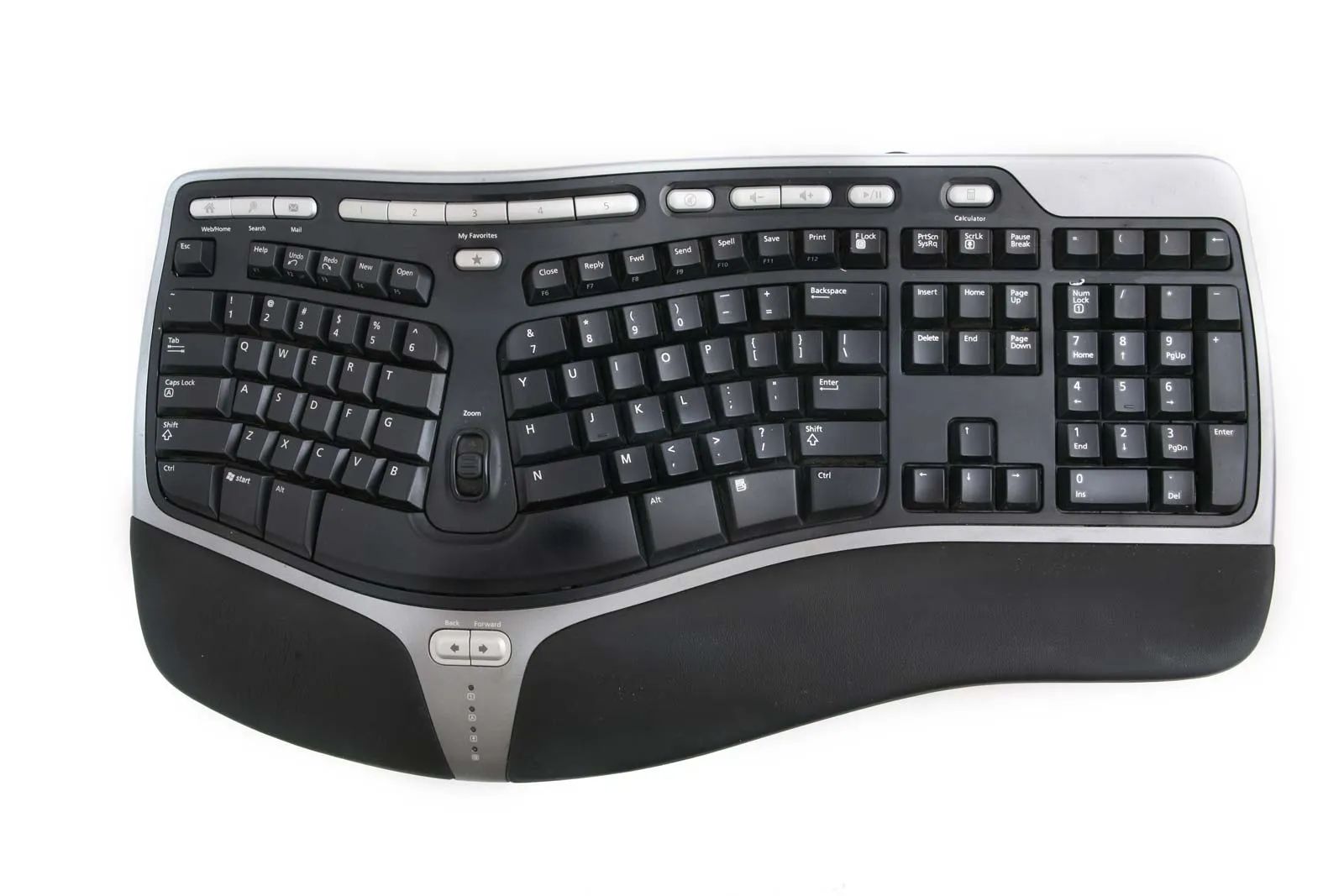The Origins of the Qwerty Keyboard
The Qwerty keyboard, the most widely used keyboard layout today, has a fascinating history that dates back to the 19th century. The origins of the Qwerty keyboard can be traced back to the mechanical typewriters that were invented during that time.
Before the invention of the typewriter, writing was done by hand, which was a slow and tedious process. There was a growing need for a faster and more efficient method of writing, especially in fields such as journalism, business, and administration.
In 1868, Christopher Latham Sholes, a newspaper editor and printer, invented the first practical typewriter. The early versions of the typewriter had a different keyboard layout that was not as widely adopted as the Qwerty layout we know today.
Sholes soon realized that the typewriter needed a more efficient keyboard layout to prevent the mechanical arms of the typewriter from jamming. He collaborated with fellow inventors and studied the frequency of letter combinations in the English language to design a layout that would reduce jamming.
The Qwerty layout, named after the first six letters on the top row of the keyboard, was designed to place commonly used letters further apart from each other, which reduced the likelihood of jamming. This layout also allowed typists to reach a decent typing speed without having the keys clash with each other.
The Qwerty keyboard was patented by Sholes in 1878 and was soon adopted by typewriter manufacturers, including the Remington Company, which played a significant role in popularizing the Qwerty layout.
The success of the Qwerty keyboard can be attributed to several factors. Firstly, it quickly became the standard layout for typewriters, leading to its widespread adoption. This standardization meant that typists did not need to learn a new layout when using different typewriter models.
Additionally, as typewriters became more popular, the Qwerty keyboard became ingrained in people’s muscle memory, making it more challenging to switch to alternative layouts. This further solidified its dominance in the market.
While the Qwerty keyboard layout was initially designed to solve mechanical issues, it still remains the most prevalent layout in modern computer keyboards, even though technological advancements have eliminated the need to prevent jamming. This can be attributed to the inertia of the established design and the resistance to change among users.
In the next section, we will explore the development of the Qwerty keyboard and how it has evolved over time.
The Creation of the Qwerty Keyboard
The creation of the Qwerty keyboard is an intriguing tale of collaboration, experimentation, and ingenuity. It all started with Christopher Latham Sholes, the inventor of the typewriter, who, in his quest to develop a more efficient writing machine, embarked on a journey that would forever change the way we interact with keyboards.
After the invention of his first typewriter, Sholes quickly realized that the initial keyboard layout had its limitations. The keys were arranged alphabetically, which caused frequent jamming when typists typed too fast. Sholes recognized the need for a new layout that would not only enhance typing speed but also minimize the risk of mechanical issues.
In 1872, Sholes joined forces with Amos Densmore, a prominent figure in the typewriter manufacturing industry. Together, they conducted extensive research and studied the frequency of letter combinations in the English language to design a more optimal keyboard layout.
The duo’s collaboration led to the birth of the Qwerty layout. This layout placed frequently used letter combinations further apart from each other, reducing the chances of jamming and allowing typists to maintain a smooth and uninterrupted typing flow. The Qwerty layout retained the traditional top row of letters, namely Q-W-E-R-T-Y, which later became its distinctive name.
Sholes and Densmore realized the potential of their invention, and in 1873, they patented the Qwerty keyboard layout. However, their work wasn’t over yet. In order to bring their invention to the masses, they needed the support of a reputable typewriter manufacturer.
It was the Remington Company that saw the potential of the Qwerty keyboard and decided to embrace and commercialize it. The Remington typewriter, released in 1873, was the first to feature the Qwerty layout as the standard keyboard. This was a game-changer, as the Remington Company had a strong presence in the market, paving the way for the widespread adoption of the Qwerty keyboard.
The success of the Remington typewriter and the Qwerty keyboard layout quickly caught the attention of other typewriter manufacturers. They followed suit and started producing typewriters with the Qwerty layout, solidifying its dominance in the industry.
Throughout the years, the Qwerty keyboard has undergone minor tweaks and modifications, primarily to accommodate new technologies. For example, the layout was adapted to typewriters with added functions, such as numeric keypads and special characters.
Today, the Qwerty keyboard remains the most commonly used keyboard layout in the world. It has seamlessly transitioned from typewriters to computer keyboards, reflecting its enduring legacy and widespread acceptance.
In the next section, we will explore the further development of the Qwerty keyboard and its impact on society.
The Development of the Qwerty Keyboard
After its initial creation, the Qwerty keyboard underwent further development and refinements to meet the evolving needs of typists and advancements in technology. This section will delve into the various stages of the keyboard’s development and the key milestones that have shaped its trajectory.
In the early days of typewriters, the Qwerty layout was primarily optimized for mechanical typewriters. However, with the advent of electric typewriters in the late 19th century, there was a need for adjustments to accommodate the different mechanism and functionality.
One significant development was the addition of numeric keypads to typewriters. This led to the inclusion of a dedicated numeric row on the Qwerty keyboard layout, allowing typists to easily input numbers without the need for an auxiliary device.
As technology progressed, the next major milestone in the development of the Qwerty keyboard was the transition from typewriters to computer keyboards in the mid-20th century. This shift brought new challenges and opportunities for improving the layout.
One area of improvement was the optimization for touch typing, a technique that involves typing without looking at the keyboard. The Qwerty layout was already designed with touch typing in mind, with frequently used keys placed in easily accessible positions. However, additional refinements were made to enhance the efficiency and comfort of touch typing.
In the 1980s, the advent of personal computers and the standardization of the Qwerty keyboard layout further solidified its prominence. The familiarity and widespread use of the Qwerty layout made it the de facto standard for computer keyboards, ensuring compatibility across different computer systems and software.
Despite the Qwerty keyboard’s dominance, alternative keyboard layouts have emerged over the years. These layouts claim to offer improved ergonomics, increased typing speed, and reduced finger fatigue.
One popular alternative is the Dvorak Simplified Keyboard, developed in the 1930s by August Dvorak and his team. The Dvorak layout aimed to maximize typing efficiency by placing the most commonly used letters on the home row, reducing finger movement. Although the Dvorak layout has its proponents, it has not gained widespread adoption and remains a niche choice.
In recent years, further advancements in technology, such as virtual keyboards on touchscreen devices, have spurred innovation in keyboard design. Virtual keyboards allow for more flexibility in layout customization, enabling users to switch between different keyboard layouts, including Qwerty alternatives.
Despite the availability of alternative layouts, the Qwerty keyboard continues to dominate due to its familiarity, widespread adoption, and default status on most devices and software platforms.
In the next section, we will explore the impact of the Qwerty keyboard on communication and productivity.
The Impact of the Qwerty Keyboard
The Qwerty keyboard has had a profound impact on communication and productivity since its inception. Its widespread adoption and familiarity have shaped the way we interact with technology and accelerated our ability to communicate and create written content.
One of the key impacts of the Qwerty keyboard is its role in facilitating efficient and rapid typing. The layout, designed with touch typing in mind, allows typists to quickly and accurately input text without needing to hunt for individual keys. This has greatly increased the speed and productivity of typists, enabling them to keep up with the demands of the modern world.
Furthermore, the Qwerty keyboard’s dominance has contributed to the establishment of a standardized typing system. This standardization has made it easier for individuals to switch between different keyboards and devices without needing to learn a new layout. It has also facilitated the development of typing training programs and educational resources, enabling individuals to enhance their typing skills for personal and professional purposes.
The Qwerty keyboard’s impact extends beyond typists to those involved in content creation and information dissemination. The wide adoption of the Qwerty layout has influenced the design of other input devices, such as mobile phone keyboards and tablet keyboards, ensuring continuity across different devices and platforms.
Moreover, the Qwerty keyboard’s ubiquity has shaped the way we interact with computers and the internet. The familiarity of the layout has made it easier for individuals to navigate and engage with digital content, from typing emails and messages to conducting research and creating multimedia presentations.
The Qwerty keyboard’s impact can also be observed in its influence on language and literacy. The widespread use of the Qwerty layout has shaped the way words are spelled and written, with a priority placed on accommodating the layout’s ergonomics and ease of typing. This has impacted language development and the way we approach written communication.
Despite the emergence of alternative keyboard layouts, such as the Dvorak and Colemak, the Qwerty keyboard remains the dominant standard due to its historical precedence and widespread acceptance. While these alternative layouts claim to offer advantages in terms of typing speed or ergonomics, they have not gained significant traction in mainstream usage, largely due to the Qwerty keyboard’s entrenched position.
Overall, the Qwerty keyboard has left an indelible mark on the way we interact with technology and communicate with one another. Its impact can be seen in the increased efficiency of typing, the standardization of input methods, and its influence on language and literacy. As technology continues to evolve, it will be interesting to see how the Qwerty keyboard continues to play a central role in our digital lives.
The Qwerty Keyboard Today
Even in the modern era of touchscreens, voice recognition, and alternative keyboard layouts, the Qwerty keyboard remains the dominant input method for computers, smartphones, and other devices. Its versatility, widespread adoption, and ingrained familiarity have solidified its position as the go-to keyboard layout in today’s digital landscape.
One of the reasons for the continued prevalence of the Qwerty keyboard is its compatibility across various devices and operating systems. Whether you are using a Windows PC, a Mac, an Android smartphone, or an iOS device, you can expect to find a Qwerty keyboard layout available as the default option.
Furthermore, the Qwerty keyboard has become an integral part of our daily lives. From writing emails and documents to engaging in social media conversations, the Qwerty layout provides a consistent and reliable means of expressing our thoughts and ideas in written form.
Despite the emergence of alternative keyboard layouts in recent years, such as the Dvorak, Colemak, and even virtual keyboards like Swype, the Qwerty keyboard continues to be the preferred choice for most users. This can be attributed to several factors, including the Qwerty’s longstanding presence in the market, the inertia of familiarization, and the compatibility with established software and workflows.
Additionally, the design of the Qwerty keyboard has proven to be adaptable to various input methods and technological advancements. Whether it’s physical keyboards, on-screen keyboards, or virtual keyboards, the Qwerty layout has seamlessly transitioned to accommodate different mediums, ensuring consistency and ease of use.
As technology continues to evolve, there have been attempts to improve upon the Qwerty layout or introduce alternative layouts. However, the widespread adoption and acceptance of the Qwerty keyboard act as a significant barrier to any major shift in mainstream usage.
Furthermore, the Qwerty keyboard layout has become deeply ingrained in muscle memory for many individuals. The skill of touch typing, which relies heavily on the layout’s positioning of keys, has become a valuable and marketable skill. As a result, individuals and organizations continue to invest time and resources in improving their typing proficiency using this widely recognized and established layout.
While the Qwerty keyboard may have its shortcomings in terms of ergonomics or efficiency, its enduring presence and flexibility make it an integral part of our digital lives. It serves as a foundation for efficient communication, rapid content creation, and seamless interaction with various devices and software.
As we look to the future, it will be intriguing to observe whether the Qwerty keyboard will maintain its stronghold or if alternative layouts will gain more widespread acceptance. Nonetheless, for the time being, the Qwerty keyboard remains the dominant input method, enabling us to navigate and thrive in the digital age.
Conclusion
The Qwerty keyboard’s journey from its humble beginnings in the 19th century to its prevalent use in the modern digital landscape is a testament to its enduring legacy. Its design, initially crafted to prevent mechanical typing issues, has had a profound impact on communication, productivity, and technology as a whole.
The Qwerty keyboard’s widespread adoption and familiarity have made it the go-to input method for typists, content creators, and individuals interacting with digital devices. Its standardization across different platforms and operating systems has ensured compatibility and ease of use.
Despite the emergence of alternative layouts, such as the Dvorak or Colemak, the inertia of the Qwerty keyboard’s dominance remains strong. It has become deeply embedded in our muscle memory, shaping the way we interact with technology and enabling us to express ourselves in written form.
Furthermore, the Qwerty keyboard’s adaptability to different input methods, such as physical keyboards, on-screen keyboards, and virtual keyboards, allows for a seamless transition between devices and platforms.
As we peer into the future, it remains to be seen if alternative keyboard layouts will gain more traction or if technological advancements will present new input methods. However, for now, the Qwerty keyboard stands tall as a symbol of efficiency, reliability, and continuity.
In conclusion, the Qwerty keyboard’s impact spans generations, revolutionizing the way we communicate, create, and interact with technology. Its design has withstood the test of time, preserving its prominence as a fundamental tool for digital expression. The Qwerty keyboard’s story serves as a testament to the power of innovation, collaboration, and adaptability, leaving an indelible mark on the world of keyboards and beyond.









